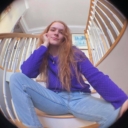The study of visual culture often portrays art as a set of fluid and sequential systems. In reality however, the historical development of art can often prove the contrary. While artistic movements can often be framed sequentially as if planned in advance, artists from every period and culture have made contributions to the development of visual culture through circumstantial resilience and a need to break from tradition.
Movements
Artistic movements such as the Renaissance are titles given to periods and specific stylizations of art which are usually defined by common themes, ideologies and techniques. The compartmentalization of visual culture creates a fluid language for historians and academics to use. These textbook definitions encompass a large and rich period of time each individually developed from the same origin. Though coming from different places, religions, time periods, beliefs, and stylizations, each of these movements in fact proves the vitality of resilience, in which each movement developed and transformed from the ideology of another.
Resilience within Movements
The constant need for transformation within art is astounding, considering the timeless nature of material culture. Yet not all movements can be categorized by the need to escape beliefs of a particular period. Dating back to the Paleolithic era over 2.5 million years ago, the development of material culture often served a functional purpose, rather than an aesthetic one. While art objects held much less political and cultural significance, they nevertheless served as indicators of a civilization’s existence.
These historical remains, though different, were markers of human resilience. Tools, records of events and activities demonstrated the ability of humans to adapt to their situational environments. The determination by prehistoric civilizations to evolve proves their strength against all odds. Building on the traditions of the earliest civilizations, humanity eventually reached a level of sophistication where these ‘movements’ were no longer characterized by evolution and survival, but attempts to break away from the social and cultural constraints within art at the time.
As artists and thinkers sought to express themselves and create change, they were often subject to the waves of criticism that quickly followed. Within every historical movement in the art world, conflict over tradition was often evident, as there were always groups who would inevitably oppose these changes. The root of such conflicts were often found in situations that were grounded in social, political, religious, or moral reasonings. Just as there is much opportunity to hold strong opinions today, art played an important role in both social and cultural development, and was constantly scrutinized. Without the strength and resilience of the artists who came before us, we would not have such rich cultural history to delve into.
The “Now”
Despite sustained attempts to suppress and even abolish artistic expression, artists have continued to to prevail in the creative expression of their thoughts and ideas. Frequent criticism, burning of art and literature, religious and cultural outcry, and vandalism are all hurdles which we have been able to move past. Yet we also often face these struggles today. We often forget that each day adds another chapter to our shared history, and the changes prompted by creatives are inevitable and proves the success of thinking outside of the box.
The problems which artists faced in the past, though much different from those which artists face today, require the same resilience and determination to move past. Yet for each new idea and each new form of expression, the public’s capacity to receive said change can sometimes remain closed-minded, a dynamic which has shown to repeat itself throughout history. Thankfully this has not hindered the capability for the arts to flourish in the past, nor shall it create limitations for future art and artists.




